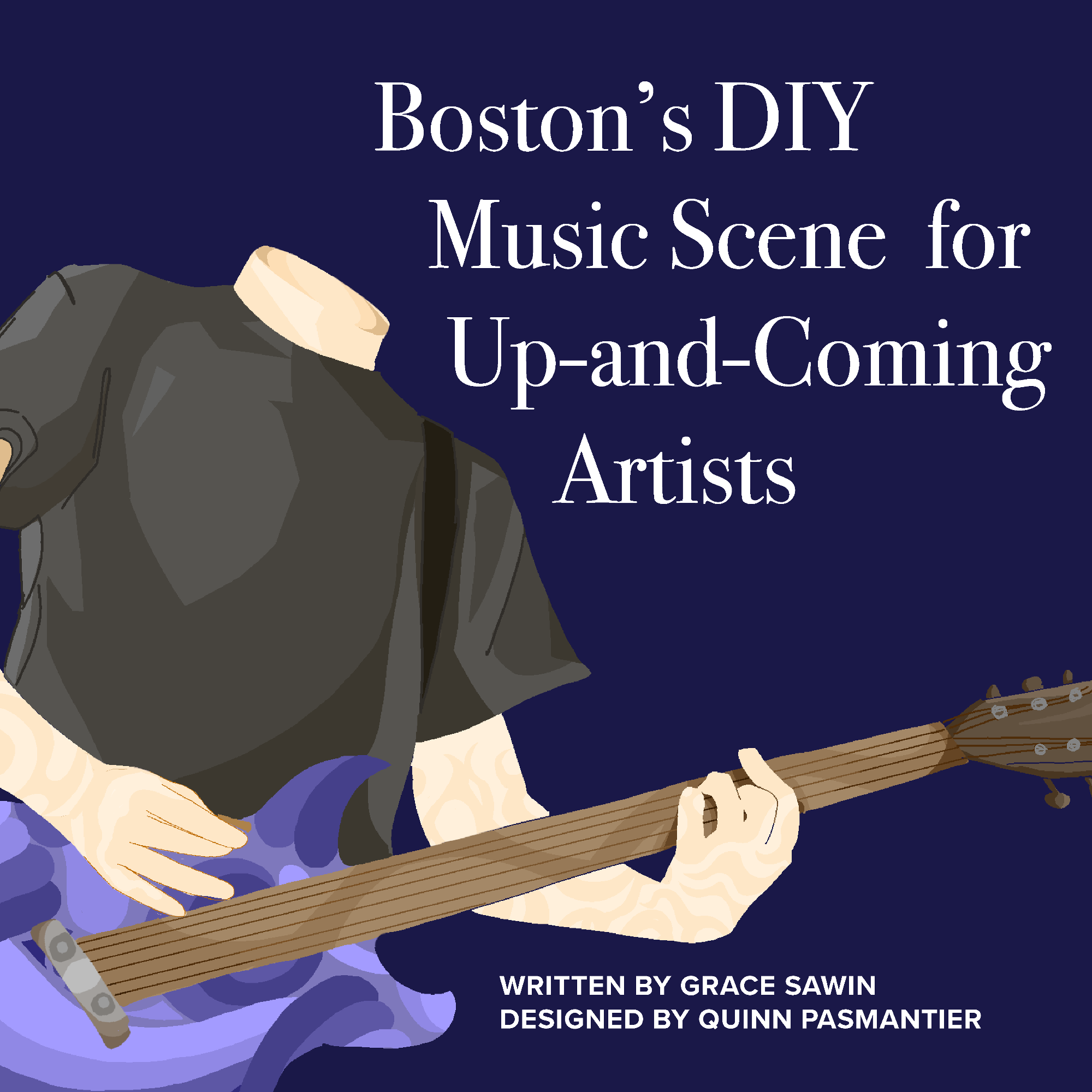
A church, car garage or art installation may not be what comes to mind when you think of a concert venue. These days, Boston’s musically talented college students are taking over the city’s most unconventional spots and garnering surprisingly large crowds.
Boston is a city home to around 64 colleges, over 150,000 students and a growing population of musicians. Some hope to make it in the music industry, with students attending institutions like the Berklee College of Music or the New England Conservatory, while others have formed groups upon meeting like-minded individuals when moving to the city.
Yet eclectic, or rather grungy, venues are not unique to this new wave of musicians; Boston is a city with a rich history of live music.
Described as an “alt-rock paradise,” Boston was an incubator for rock in the ‘60s, ‘70s and ‘80s. The ‘60s saw a resurgence of garage rock bands like The Remains, making way for the rise of hard rock in the early ‘70s. By the mid-’70s, a punk and new wave scene emerged, with bands like The Modern Lovers and Nervous Eaters peaking. These groups almost solely existed underground, paving the way for the basement shows we continue to see today. It wasn’t until the ‘80s with the establishment of the new wave pop rock band The Cars that the world was exposed to Boston’s underground scene.
The underground music scene had never been known for its cohesiveness; however, by the late ‘80s and early ‘90s, the scope of genres exploded, from R&B to hardcore music to hip-hop to ska. Yet, despite this expansion, Boston artists of all genres continued to maintain a “DIY” attitude, filling small venues for an intimate listening experience.
Today, Boston’s college students have kept this legacy alive. Northeastern is home to many student artists, like Cherry Crisis, a relatively new queer band that writes and produces their own music.
Andy Keiper, a second-year environmental science and data science combined major, plays bass for Cherry Crisis. Most of the time, the band plays with other college students, many of whom are also from Northeastern. Recently, the band played at The Middle East in Cambridge — a bar and restaurant — where just down a flight of stairs lies a rock venue.
“We really enjoyed playing The Middle East, it felt like a super well-respected venue,” Keiper said. “Everyone there was so kind, including the people who soundchecked us and helped us out. The vibe in there was overwhelmingly positive, and we got to play with Back on the Fence and Reid Duran.”
Both Back on the Fence and Reid Duran are also comprised of undergraduate students.
But why has Boston’s “DIY” music scene stayed so popular over the years?
Boston is not exactly known for its nightlife — after all, the trains stop running around 12:30 a.m., although many will be fast asleep by then. House shows are often a great alternative to a club or bar, and they’re usually 18 plus, which can be exceptionally appealing to undergraduate students. Although the way we consume music has changed, there is still value in its physical existence. Live music has the undeniable power to bring all types of people together in an environment that is hard to recreate.
Cherry Crisis is currently working with Northeastern’s design club Scout, which is assisting the band in releasing music on streaming platforms, creating music videos and developing a distinctive social media and online presence, all while continuing to appeal to a live audience. Simply put, instead of letting the popularity of streaming deter musicians from growing, these new tools can be used to their advantage.
Boston’s musicians are extremely adaptable, and just because there are more ways to experience music doesn’t mean there isn’t sustained demand for live music. For now, Boston’s live music scene is only getting stronger.